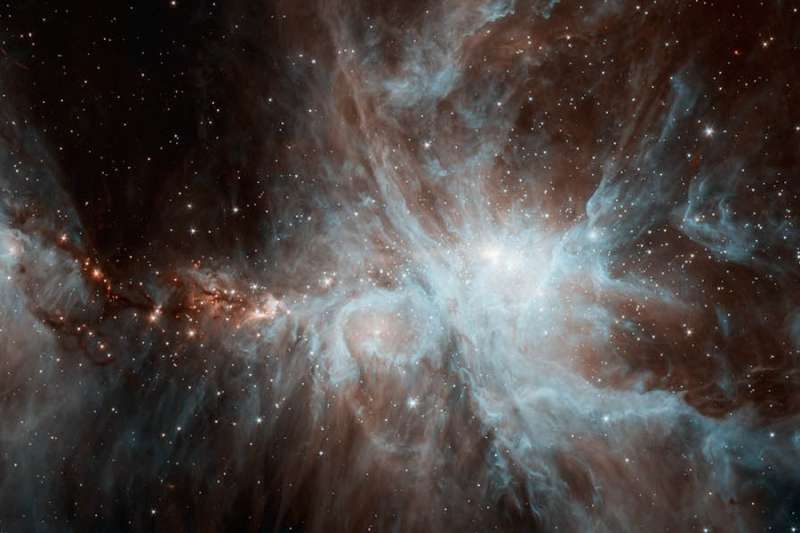Credit & Copyright: NASA,
JPL-Caltech
Explanation:
Few cosmic vistas excite the imagination like
the Orion Nebula,
an immense stellar nursery some 1,500 light-years away.
Spanning about 40 light-years across the region,
this infrared image
from the Spitzer Space Telescope was constructed from data intended to
monitor
the brightness of the nebula's young stars, many still surrounded
by dusty, planet-forming disks.
Orion's young stars are only about 1 million years old,
compared to the Sun's age of 4.6 billion years.
The region's hottest stars are found in the
Trapezium Cluster, the brightest cluster
near picture center.
Launched into orbit around the Sun
on August 25, 2003 Spitzer's liquid helium
coolant ran out in May 2009.
The infrared space telescope continues to operate though, its mission
scheduled to end on January 30, 2020.
Recorded in 2010, this false color view is from two
channels that still remain sensitive to
infrared light
at Spitzer's warmer operating temperatures.
1999 2000 2001 2002 2003 2004 2005 2006 2007 2008 2009 2010 2011 2012 2013 2014 2015 2016 2017 2018 2019 2020 2021 2022 2023 2024 2025 |
Январь Февраль Март Апрель Май Июнь Июль Август Сентябрь Октябрь Ноябрь Декабрь |
NASA Web Site Statements, Warnings, and Disclaimers
NASA Official: Jay Norris. Specific rights apply.
A service of: LHEA at NASA / GSFC
& Michigan Tech. U.
|
Публикации с ключевыми словами:
infrared - Orion Nebula - Spitzer space telescope - Туманность Ориона - инфракрасное излучение
Публикации со словами: infrared - Orion Nebula - Spitzer space telescope - Туманность Ориона - инфракрасное излучение | |
См. также:
Все публикации на ту же тему >> | |
